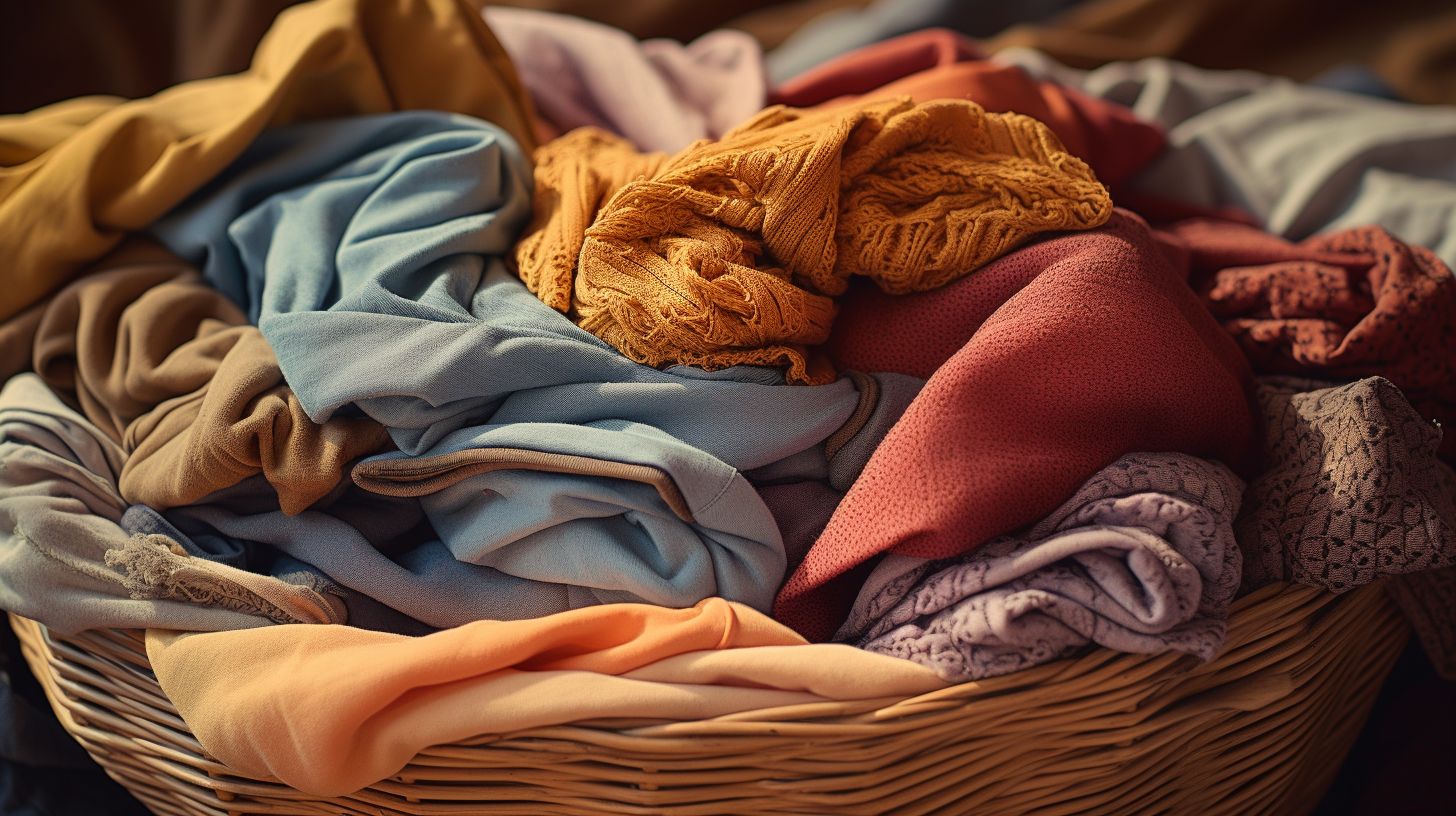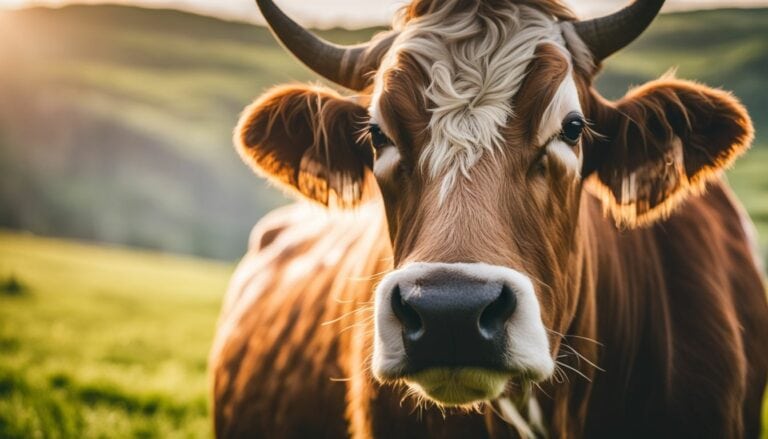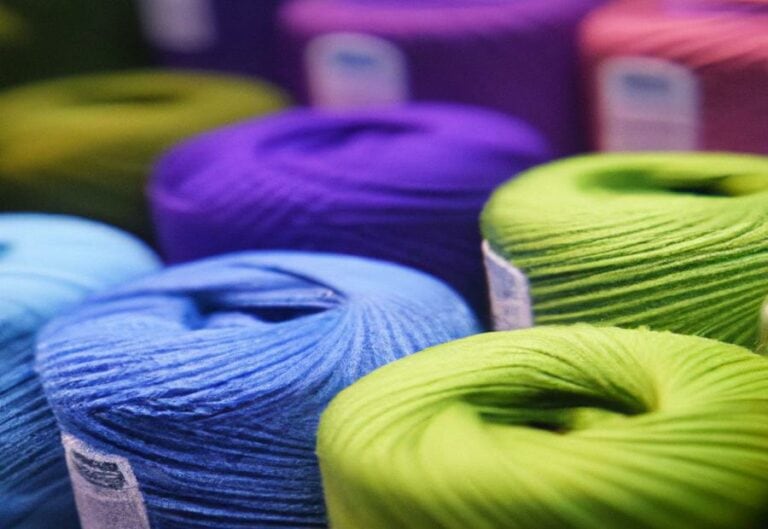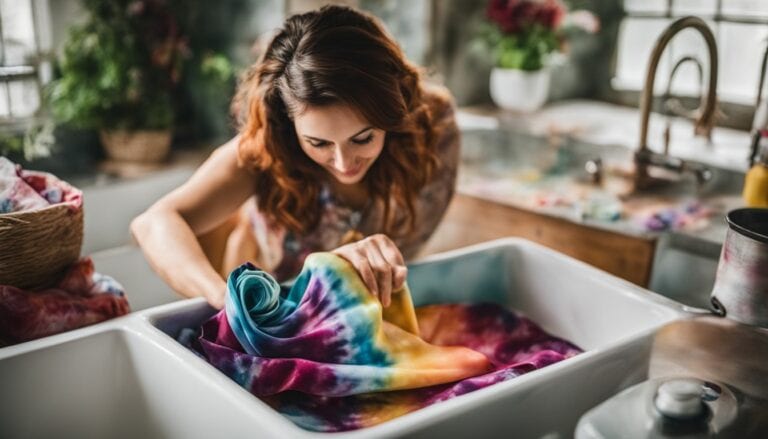Is Elastane Breathable? Prepare to be Amazed!
Ever wondered if the elastane in your favorite outfit is truly breathable? Elastane, otherwise known as Spandex or Lycra, might feel comfy but it packs less breathability than natural fibers like cotton. This blog will unravel all you need to know about elastane and its breathability with benefits and drawbacks tossed into the mix. Are you ready to discover what makes this fabric tick?
Key Takeaways
- Elastane, also known as Spandex or Lycra, is a stretchy fabric used in many clothes. It’s not as breathable as natural fibers like cotton or linen.
- This fabric is big in the textile industry because of its flexibility and toughness. It can handle body oils and lotions very well.
- The blend with other materials makes elastane breathe better. For example, mix it with cotton gives stretch comfort and coolness all together.
- Breathability means how well air passes through a material hence keeping you cool. Elastane doesn’t score high on this but its moisture-taking traits are good for sportswear!
Brief overview of elastane
Elastane is a type of fabric. We also call it spandex or Lycra. It’s very stretchy and has many uses in clothes-making. Many use it to make sportswear because it can move with the body.
But, elastane is not as breathable as some natural fabrics like cotton or linen are. So, if you wear clothes made from elastane when it’s hot out, you might feel sweaty.

Importance in the textile industry
Elastane has a big role in the cloth world. It is also known as spandex or Lycra. This fabric can stretch a lot. That makes it very useful for making clothes that must fit well on our bodies.
Think of tight jeans, gym wear, and swim suits! Elastane can also bounce back to its old shape after being stretched out. So, your fitted shirts stay snug even after many uses! What’s more? Elastane does not get spoilt easily by body oils or lotions either.
That’s why we use this fabric so much in the textile industry today!
Understanding Elastane
Discover how elastane, a versatile synthetic fiber with unique properties, has revolutionized the textile industry since its inception and why it’s an essential component in many of our everyday wear.
To learn more about this fascinating material, what sets it apart and where you’re likely to find it being used most often – keep reading!
Definition and properties
Elastane is a man-made cloth. People can also call it spandex or Lycra. It is stretchy and bounces back to its first size after you pull it. This fabric has a special makeup, named polyether-polyurea copolymer.
Elastane is known for its strength and how long it lasts compared with natural fibers like cotton or wool. In both beachwear and sports clothes, we use elastane much because it can resist body oils and lotions very well.
Historical background and discovery
Elastane is a synthetic fabric, also known as spandex or Lycra. It was first made in the 50s by chemists C. L. Sandquist and Joseph Shivers. They wanted to find a material that could stretch but return to its original shape.
Their work led them to create elastane. This fabric can stretch up to five times its normal length! Lots of clothes now use it for this reason. Its discovery changed how we make things like sports gear, swim suits, and even day-to-day wear.
Common uses in clothing and other industries
Elastane is in many types of clothes and works. Elastane’s stretch makes it ideal for some jobs.
- In sportswear, elastane helps. It lets clothes fit tight but still lets you move. This is key in sports like yoga or dance.
- Swimwear often has elastane. Right fit and good movement are musts for swimsuits.
- Underwear with elastane fits well and feels soft on the skin.
- Items like gloves and hats use elastane for a snug fit.
- Home objects, like couch covers or fitted sheets, may have some elastane as well.
- Medical goods also use this stretchy stuff. Compression socks help blood flow better.
- Elastane is even used in hair bands to hold hair up and tight.
- Socks with elastane do not slip down into shoes.
Evaluating the Breathability of Elastane

We delve into assessing the breathability of elastane, discussing various determining factors including fabric thickness, weave pattern and blends with other materials. We compare its breathability to commonly used natural and synthetic fibers such as cotton, polyester, and wool.
Factors that affect breathability
Elastane’s ability to let air pass through it depends on a few things. These are the factors that can affect its breathability:
- Fabric Thickness: Thin fabric lets in more air than thick fabric.
- Weave Pattern: The way the cloth is made can change how air moves through it.
- Blending with Other Materials: If elastane mixes with other stuff like cotton, it can breathe better.
Fabric thickness
Elastane is thin yet strong. Its light weight adds to its breathability, but not as much as other fabrics. Fabric thickness plays a big part in this. Thick clothes can feel heavy and hot while thinner ones are light and cool.
Even though elastane is thin, it does not breathe like cotton or linen does. This makes elastane less suited for very warm weather than natural fibers.
Weave pattern
The weave pattern of elastane impacts how much air can pass through. Elastane’s blend with other materials will change the weave pattern. A loose weave allows more air to flow and boosts breathability.
On the flip side, a tight weave limits airflow and makes the fabric less breathable.
Blend with other materials

Elastane often gets mixed with other things. Other fabrics add to its powers. Cotton, for example, makes it more soft. The blend also pumps up the breathability feature of elastane.
This mix suits many items of clothes.
People pick these blends for a reason! They get stretch, comfort and coolness in one shot. Elastane shows off its best side this way.
Comparing breathability to natural and synthetic fibers
Elastane’s breathability can be compared with both natural and synthetic fibers to understand its overall performance. Each fabric type has unique properties that affect its breathability, including its weave pattern, thickness, and blend with other materials. Here’s a table that compares the breathability of elastane with that of cotton, polyester, and wool:
| Fabric Type | Breathability |
|---|---|
| Elastane | Elastane fabric is relatively breathable, but not as much as natural fibers. It’s often used in activewear due to its sweat and moisture-wicking capabilities, but it is not highly breathable and can trap moisture, sweat, and bad odor within the garment. |
| Cotton | Cotton is considered one of the most breathable fabrics. It allows for easy air circulation and is comfortable to wear, even in warmer weather. However, unlike elastane, it lacks in stretchability. |
| Polyester | Polyester is a synthetic fiber that is less breathable than both elastane and cotton. It’s commonly used in activewear for its durability but doesn’t absorb moisture as effectively, leading to a less comfortable wear in hot conditions. |
| Wool | Wool is a natural fiber that’s more breathable than elastane but less than cotton. Wool fabrics can keep the wearer warm during cold seasons and cool in warmer temperatures due to their natural breathability, but they might not match elastane’s flexibility and stretch. |
When considering the breathability of these fabrics, remember that a blend of different materials can also affect breathability. Elastane can be blended with other fabrics like cotton to enhance their stretchiness, durability, and potentially their breathability.

Cotton vs. Elastane
Cotton and elastane are both used to make clothes. But they have different traits. Cotton comes from plants. It lets air pass through so it feels cool on hot days. Elastane is man-made and can stretch a lot without losing shape.
This makes it perfect for tights or jogging pants. But it doesn’t allow as much air to pass through as cotton does, which can make you feel too warm if the weather is hot.
Polyester vs. Elastane
Polyester and elastane are both in clothes we wear. Polyester is good at holding its shape. This makes it perfect for things like school uniforms and work clothes. Elastane, on the other hand, can stretch a lot.
It is often found in sportswear because of this. But when we talk about breathability, polyester falls short. Clothes made of polyester do not let air pass through well, which can lead to sweat build-up and odor in hot weather or during exercise! Elastane does better here; but still, it’s not as breathable as natural fabrics like cotton or linen from fact 1 above!
Wool vs. Elastane
Wool and elastane are different. Wool is a natural fiber from sheep. It keeps us warm in cool weather. But, it can feel heavy and not dry fast when wet.
On the other side, elastane also known as Spandex or Lycra has high breathability compared to wool. This fabric is stretchy, light and best for sweat control because of its moisture-wicking powers.
It works well in activewear like gym clothes but won’t keep you cozy in cold weather like wool does.
Advantages of Elastane

Elastane offers high flexibility, allowing a snug fit without restricting movement. It resists wear and tear, promising durability. The fabric’s moisture-wicking properties make it ideal for activewear or sportswear.
Unlike many materials, elastane retains its quality despite exposure to body lotions or oils.
Stretch and flexibility
Elastane is known for its stretch. You can pull it and it will go back to its shape. This makes clothes fit better. It also feels great on the skin. Sports clothes have a lot of elastane in them.
That’s because sports need a lot of movement. Elastane helps with that movement!
Durability and resistance to wear and tear
Elastane is a tough fabric. It can stand up to a lot of use and doesn’t tear easily. This strength is why it’s used in clothing that gets heavy wear. People who play sports love it because of this strong stretchy fabric prolongs the clothes life span, even during hard use.
Elastane also holds onto colors and shapes well, even after many washes!
Moisture-wicking properties
Elastane is good at drawing sweat away from your skin. This keeps you dry while you move around. It’s a key trait for workout clothes and other active wear. Clothes that stay dry keep you comfy longer.
Yet, elastane does not absorb the sweat like cotton or wool might do. Instead, it moves the moisture to the fabric’s surface. Here, it can dry fast in air or sun light. That makes elastane great for hot days and heavy workouts too!
Ideal for activewear and sportswear
Elastane is perfect for sports clothes. It takes its shape back after being stretched. This makes it great for things like gym shorts and yoga pants. Clothes made with elastane also dry fast when they get wet from sweat.
The fabric pulls away moisture too, so you stay cool and dry during a workout or game.
Resistance to oils and body lotions
Elastane is tough. It can stand up to oils and body lotions. This is why it’s used in swimwear often. Oils and lotions don’t break down the fabric of elastane. It stays strong and keeps its shape for a long time, even with regular use.
Drawbacks of Elastane

While elastane is appreciated for its stretch and durability, it lacks breathability when compared to natural fibers such as cotton. Prolonged exposure to sunlight can cause shrinkage and color fading in elastane fabrics.
The material is susceptible to pilling over time, which diminishes aesthetic appeal. Lastly, the fabric has sensitivity towards high temperatures which makes it challenging for ironing or tumble-drying with heat.
Limited breathability compared to natural fibers
Elastane is not as airy as natural fibers like cotton or linen. This makes it harder for air to flow through clothing made of elastane. It can cause some discomfort during hot weather.
Sweat may get trapped and make the skin damp.
Color fading and shrinkage can also happen with elastane when exposed to sunlight for a long time – this includes both heat from the sun and its bright light rays.
Also, be careful while washing clothes with elastane in them. Heat can damage it fast.
Shrinkage and color fading with prolonged exposure to sunlight
Sunlight can harm elastane. Over time, the sun’s rays lead to shrinkage and color loss in this fabric. Elastane clothes hung out to dry in direct sunlight for long hours may show signs of damage.
Direct sun exposure makes them lose shape through shrinking. The colors also face fading due to strong ultraviolet (UV) light from the sun. Thus, it is best to keep elastane away from prolonged periods under the bright sun.

Potential for pilling
Elastane clothes may form small balls of fuzz. This is called pilling. The cause of this issue is wear and tear or rubbing against other fabrics. Pilling makes your clothes look old and worn out.
Avoiding harsh washing can help reduce pilling on elastane items.
Sensitivity to high temperatures
Elastane doesn’t like heat. High temperatures can hurt it. Heat can make the fabric shrink or warp. Irons and hot dryers are not good for elastane clothes. This is why you should use cool water to wash them.
And let them air dry instead of using a dryer.
Breathability in Cotton-Elastane Blends

Discover the breathability quotient of cotton-elastane blends, understand how proportions can impact air circulation, and find out why this blend has become a fashion staple. Let’s dive in for more!
Proportions and their effects on breathability
More cotton means more air flow. Less cotton can make a cloth tight and hot. Cotton mixed with elastane lets the cloth stretch but also breathe. More elastane holds tight to your body and allows less air to pass.
Less elastane helps keep you cool but might not fit as well.
Benefits of blending with cotton
Cotton makes a great team with elastane. Both come together to create soft, stretchy clothes. Cotton supports breathability in the blend. It helps air flow well and reduces sweat on the skin.
Elastane brings strength to the cotton fibers as well. This pairing can make garments longer-lasting without losing shape over time. Blends of these two are common in t-shirts, yoga pants and summer dresses for comfort and style.

Common uses of cotton-elastane blends in fashion
Cotton-elastane blends play a big role in fashion. This blend has many uses, such as:
- Making t-shirts: The stretch from elastane and the softness of cotton make for a comfy shirt.
- Crafting yoga pants: These turn out flexible and strong with this mix.
- Sewing up sportswear: This blend does great for sports clothes that need to fit tight but still give room to move.
- Popping up in jeans: Stretchy jeans fit better and hold their shape thanks to some elastane in the weave of the cloth.
- Helping socks stay snug: Socks with an elastane-cotton mix keep their fit even after lots of washings.
- Going into undies: Undies need to be nice to wear all day, and this mix helps them do that job well.
- Making dresses with fitting cuts: A dress made with this kind of cloth can be snug but not poke or press on you.
How Elastane Affects Comfort and Air Circulation

In this section, we’ll discuss how the use of elastane in clothing can impact comfort levels by influencing airflow and temperature regulation, as well as its role in managing sweat and moisture.
Role in temperature regulation
Elastane plays a key part in how warm or cool you feel. This fabric stretches to fit the body, helping to keep warmth close to the skin on cold days. When it’s hot, the tight fit lets sweat move away from your body.
But elastane is not as good with heat as natural fibers are like cotton or linen. So while it helps some with temperature control, clothes made only of elastane may make you feel hotter and sweaty in warm weather.
Impact on sweat and moisture management
Elastane fabric is good at handling sweat and moisture. It gets rid of wetness from our bodies during workouts. This lets us stay dry and comfy even when we exercise hard. Elastane’s stretch saves skin from rashes or chafing caused by damp clothes rubbing against the body.
But elastane does not beat cotton or linen when it comes to sucking up sweat; those fabrics can still take more moisture in.
Careful attention must be both on whit your elastane clothing very well because they can become stinky if you let go for too long without washing off accumulated sweat. So, don’t leave your sweaty workout gear lying around after use!

Maintaining Breathability in Elastane Clothing
To maintain the breathability in elastane clothing, pay close attention to washing instructions as they preserve fabric quality. Properly caring for these fabrics extends their lifespan and keeps them at optimal performance levels.
Be mindful of drying methods – correct ones can ensure the elastane retains its functionality without compromising on breathability.
Washing instructions to preserve fabric quality
You need to care for your elastane clothes. The right care keeps them looking new and fun to wear.
- Hand wash the clothes gently in cold water.
- Do not use bleach on the clothes.
- Dry the clothes in a shady spot outside.
- Avoid using cloth softeners on elastane – based outfits.
- Give the clothes space when air – drying them.
- Don’t put the clothes in hot water.
- Always check label before washing or drying the clothes.
- Iron the clothes at a low setting to avoid damaging them.
Care tips to extend lifespan
Taking care of your elastane clothes can make them last longer. Here are some tips:
- Wash them in cold water. Hot water can harm the fabric.
- Don’t use bleach. It can weaken the fabric and cause it to rip.
- Air dry your clothes. The heat from a dryer can shrink elastane and cause it to lose its stretch.
- Keep them away from direct sun for too long. This can make the color fade.
- Don’t iron elastane clothes. Iron heat can damage this fabric type.
- Make use of gentle detergent for washing these clothes, strong ones might harm them.
- Avoid pinching or pulling your elastane garments roughly as they are quite flexible yet delicate.
Drying methods and their effects on elastane
Handling elastane with care helps it last longer. Direct sunlight can fade the color and cause shrinkage. Using a dryer on high heat also leads to shrinking and weakening of the fabric. Instead, use a cool or gentle drying cycle. Air drying is a good option as well. Too much heat is not good for it as mentioned in the important facts section above.

Environmental Impact of Elastane
We’ll delve into the environmental footprint of elastane, focusing on its non-biodegradable nature and energy-intensive production process. Ways to mitigate its environmental impact through recycling, upcycling, and sustainable production methods will be discussed too.
Non-biodegradability and its implications
Elastane is a fabric that does not break down easily. This could be bad for our planet because it means that when we throw old clothes away, they don’t go away quickly. Some even stay in landfills or oceans for hundreds of years! These fabrics can harm animals and plants over time.
Making elastane also uses up lots of energy which adds to pollution problems. Companies are trying things like recycling and new ways of making stuff to help fix these issues.
Energy-intensive production process
Making elastane uses a lot of energy. Big machines heat and cool the materials many times. This takes a lot of power. It also puts out gases that are bad for the air we breathe. This process is not good for our planet, but right now there’s no other way to make this stretchy fabric.
Reducing environmental impact
We can cut down the harm Elastane does to earth. Here are ways how:
- Choose Elastane from brands that reuse. Some use old stuff to make Elastane.
- Give away old clothes, don’t trash them! They might end up as new Elastane.
- Buy less, pick well. Clothes made of good Elastane last longer!
- Wash in cool water. This helps your Elastane clothes stay nice for a long time.
- Try not to dry with too much heat. Drying in the sun is best for Elastane clothes.
- Look out for “green” labels. They show that the maker cares about our earth.

Recycling and upcycling opportunities
Old elastane can be made new again! We can recycle used clothes to save our Earth. It helps us cut down on trash. This also leads to less need for new materials. Old t-shirts or gym shorts become rags and craft items, artfully refashioned by wise hands.
Clothes get a chance at a second life instead of ending up in the dump. Many companies now take part in this action too. They accept old clothes and remake them into fresh designs but it is not just businesses that do this work; you can join as well! Learn how to give your outworn clothing items an uplift today.
Sustainable production methods
Making elastane in a green way is tough. But some brands are finding better ways. They keep waste down by using old clothes and scraps to make new fiber. This method cuts back on trash and uses less energy than making new stuff from scratch.
It takes a lot of steps but everyone wins. The earth doesn’t get dirty, people have jobs, and we all get cool stretchy clothes!

Alternatives to Elastane
This section will explore various natural and sustainable alternatives to elastane that the textile industry is implementing. It covers the most recent fabric innovations, looking at how they match up to elastane in terms of breathability, durability and stretchability.
Natural and sustainable options
Here are a few natural and sustainable choices if you want something other than elastane.
- Bamboo: This cloth is soft, strong, and naturally breathable.
- Organic Cotton: It is kind to your skin and the environment.
- Hemp: The hemp fabric lasts long and gets softer every time you wash it.
- Linen: This fabric made from flax plant fibers lets the air flow freely.
- Soy Silk: Made using soy protein, this one feels as soft as silk but has the cool breathability of cotton.
- Wool: It may feel warm for summer wear but it is known to get rid of sweat quickly.
Recent innovations in the textile industry
New ways to make clothes are changing the textile world. One big change is making fabric from recycled bottles and plants. Elastane gets mixed with these for better fit and feel. Some companies are working on biodegradable elastane too! This kind of stuff will break down in landfills unlike normal elastane.
Making new things like this may help our planet stay clean and green.
Conclusion
Elastane has many uses because it can stretch. Yet, elastane is not as good at letting air come through like cotton or linen are. This makes it less good for hot days or heavy workouts.
But, mixing it with cotton can make things better! So, some clothes will use a mix of both to get the best parts of each material.

FAQs
1. What is elastane material?
Elastane, also known as spandex, is a stretchy fabric found in sportswear and activewear due to its standout property – stretchability.
2. Is elastane breathable?
Yes, depending on the blend fabrics with elastane used; certain combinations like cotton and elastane can improve breathability of fabrics.
3. Does nylon or polyester paired with elastane breathe well?
Nylon or Polyester when mixed with Elastane may not be as breathable as cotton blends but are often chosen for their moisture-wicking properties, useful in sportswear.
4. How does one care for garments made from elastane?
To take good care of your clothes that have an Elastane percentage, avoid heat since it’s not flame-resistant; washing them gently will keep these clothes comfortable to wear longer.
5. Are synthetic fabrics like polyamide and rayon breathable when combined with elastan?
Synthetic materials like polyamide and rayon when blended with Elastan may lack the high level of breathability seen in natural fibers yet perform well in facilitating ease of movement.
6. Can I wear garments made from an “elastin blend” during summer season?
Certainly! Elastin is popularly used in creating summer clothing pieces due to its lightweight nature.







